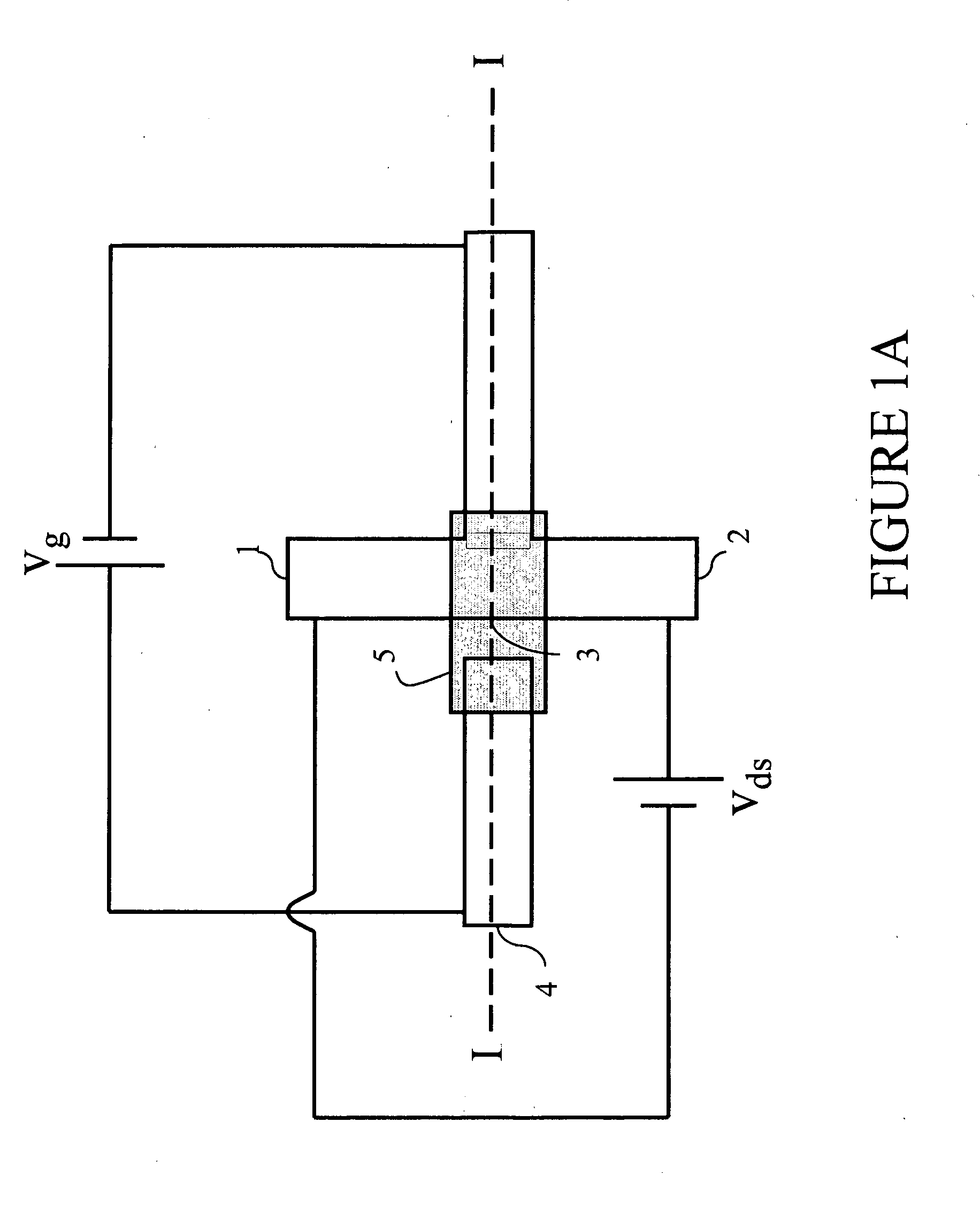Electrochemical device and methods for producing the same
a technology of electrochemical transistors and electrochemical devices, which is applied in thermoelectric devices, instruments, nanoinformatics, etc., can solve the problems of affecting the practical use of prior art electrochemical transistor devices, affecting the practical use of electrochemical transistor devices, and requiring high manufacturing costs
- Summary
- Abstract
- Description
- Claims
- Application Information
AI Technical Summary
Benefits of technology
Problems solved by technology
Method used
Image
Examples
experiment 1
[0129]Bi-stable transistor: A bi-stable transistor such as that shown schematically in FIGS. 1A and 1B was realized. The bi-stable transistor had a transistor channel width of 600 μm and a gel width of 800 μm, with a transistor channel of 0.48 cm2. However, smaller dimensions were also successfully tested using photolithographic photoresist patterning in combination with reactive ion plasma etching. These devices exhibited channel widths ranging from 5 to 20 μm and a gel width of 20 μm.
[0130]Typically, the gate voltages Vg applied to the gate electrode were in the interval between 0 V and 0.7 V. Drain-source characteristics were determined by sweeping the source-drain voltage from 0 V to 2 V. The resulting I-V curves are displayed in FIG. 4.
[0131]Characteristic switching times for the conductivity modulation were determined by applying a square shaped modulation voltage (alternating between 0 V and 1 V) and measuring the resulting current changes. Typical rise and decline times (def...
experiment 2
[0139]Bi-stable transistors such as that shown schematically in FIGS. 1A and 1B were realized. The bi-stable transistors had a transistor channel width of 3 mm and a gel width of 4 mm, with a transistor channel of 12 mm2. Typically, the gate voltages Vg applied to the gate electrode were in the interval between −15 V and 15 V. Drain-source characteristics were determined by sweeping the source-drain voltage from 0 V to 10 V. The resulting I-V curves are displayed in FIG. 6 (polyaniline supplied in toluene solution) and FIG. 7 (polyaniline supplied in m-cresol solution).
[0140]On / Off ratios (defined as the current ratio Ids,max / lds,min at a source-drain voltage Vds of 2 V for Vg=0 V (on) and Vg=4 V or −4 V (off)) reached 100 for both negative and positive gate voltages.
Three-Terminal Transistors
[0141]Due to the impracticality to design circuits based on transistors with floating gate supplies a three-terminal transistor having a fixed gate supply will be described in the following. In...
PUM
| Property | Measurement | Unit |
|---|---|---|
| gate voltage Vg | aaaaa | aaaaa |
| line widths | aaaaa | aaaaa |
| distance | aaaaa | aaaaa |
Abstract
Description
Claims
Application Information
 Login to View More
Login to View More - R&D
- Intellectual Property
- Life Sciences
- Materials
- Tech Scout
- Unparalleled Data Quality
- Higher Quality Content
- 60% Fewer Hallucinations
Browse by: Latest US Patents, China's latest patents, Technical Efficacy Thesaurus, Application Domain, Technology Topic, Popular Technical Reports.
© 2025 PatSnap. All rights reserved.Legal|Privacy policy|Modern Slavery Act Transparency Statement|Sitemap|About US| Contact US: help@patsnap.com



